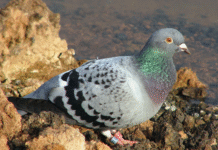SOME relationships can be complicated. Take the one between sweet potato crops and soil nitrogen, for example.
Too little nitrogen and sweet potato plants don’t grow well and have low yields. Too much nitrogen, however, boosts the growth of leaves and branches at the expense of storage roots. That also leads to low yields.
“Carefully managing soil nitrogen levels is essential to obtain high yields from sweet potato crops,” says Adalton Fernandes, an agronomist at the Center for Tropical Roots and Starches at São Paulo State University in Brazil.
Fernandes is the lead author of a new study that determined how much nitrogen is needed to maximise yields from sweet potato crops in Brazil.
The researchers discovered field history matters when trying to apply the optimal amount of nitrogen for sweet potato crops. Cover crops grown in the same plots prior to sweet potato crops affected how much nitrogen was needed.
Sweet potato plants grown in plots previously used to grow legume cover crops needed 35% less nitrogen fertiliser.
Growing sweet potatoes after a cereal cover crop, however, was no different than growing them in a plot that had previously just had weeds.
We show that growing legume cover crops, and incorporating them into the soil as they flower, is a simple technique that can reduce how much mineral nitrogen needs to be applied for sweet potato farming,” says Fernandes.
Cover crops are often grown cyclically with economic or cash crops. They may be incorporated into the soil as green manure. They may also be left on the surface as living mulches.

















